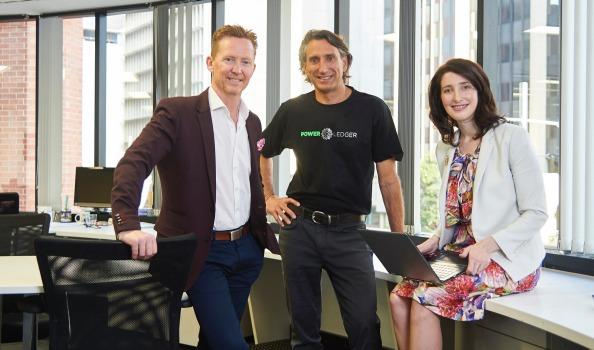Blockchain technology is the backbone of cryptocurrency Bitcoin. Could it also work for peer-to-peer energy trading?
With the monopoly investor-owned utility industry waging all-out war against net metering, new and innovative approaches to “cord cutting” need to be explored. Just like the land-line telephone companies before them, power generation and distribution companies are choosing to fight the inevitable change in their industry. Rather than embracing disruptive technology as an economic opportunity, utilities are forcing consumers to explore other options for buying energy.
Battery storage is seen by many as the silver bullet that will take down the utility industry werewolf, but there are many other technological options on the horizon. One promising option is local energy trading, a scheme in which neighbors can buy and sell excess solar generation amongst themselves, rather than dealing with the utility company. One neighborhood in Western Australia is employing a digital cryptographic ledger– known as a “blockchain”– to manage their energy transactions.
According to a recent article in New Scientist, a retirement village in the city of Busselton, Western Australia, is taking part in the pilot project run by local start-up Power Ledger. Meters at 20 homes plus a clubhouse in the retirement community will be fitted with Raspberry Pi mini-computers to track their energy usage. Homeowners can decide who and how much to sell their excess renewable energy to, with each transaction logged on the blockchain. “Consumers want to take control of their energy generation and consumption,” Power Ledger co-founder Jemma Green says. “We want to show that this tech is so simple to use that anyone could use it.”

So what exactly IS blockchain?
Idealog contributing writer David Hall describes it like this:
“The concept was invented in 2008 as the basis for renegade online currency, bitcoin. In this context, the blockchain is a digital ledger that records every bitcoin transaction that has ever occurred. It is protected by cryptography so powerful that breaking it is typically dismissed as “impossible”. More importantly, though, the blockchain resides not in a single server, but across a distributed network of computers. Accordingly, whenever new transactions occur, the blockchain is authenticated across this distributed network, then the transaction is included as a new “block” on the chain.”
In other words, there is no central repository of information- a constantly updated list of encrypted transactions exists across the network, allowing free interaction among participants across an extremely secure private network. According to Power Ledger’s website: “Power Ledger allows for each unit of electricity to be tracked from the point of generation to the point of consumption within the building it is generated, or when sold to other consumers, using the local electricity distribution network. Blockchain technology couples a tracked energy transaction with a financial one, making the process of realising the value of renewable energy investments simple and secure. Power Ledger allows renewable energy asset owners to decide who they want to sell their surplus energy to and at what price. Energy traded across the distribution network is tracked providing a secure revenue stream for DNSPs.”According to the Australian publication RenewEconomy, the trials will last eight weeks.
Interestingly, Power Ledger is partially owned by Ledger Assets, whose other projects include photo and video authenticity service Uproov.com, and it is developing Enome.io for “blockchain medical records applications.” It also has projects in the works for both fine arts and insurance. Obviously, the primary motivation of the developers is to develop new uses for blockchain technology, not specifically to work in the energy sector.

The Australian project is not the first such blockchain powered solar projects. In March, I reported on the Brooklyn microgrid, another blockchain powered solar energy trading project. The Brooklyn project appears to be making slow and steady progress since it’s launch, running on the Ethereum blockchain. The first energy sale on the network took place in April. LO3 Energy, the microgrid’s developer, is working on other interesting energy projects, like Project Exergy, an R&D effort to turn computers into primary sources of heat. This computational and distributed model provides utilities with new integration options for recapturing wasted resources, managing both the load/shift balance and demand-response needs, and increasing customer retention through innovation.
Although there is some debate surrounding the actual energy usage embedded in a blockchain-based system, it appears that there is a great deal of promise in the use of blockchains in microgrid energy trading. Solar advocates will be watching both the Brooklyn and the Busselton projects with great interest.





